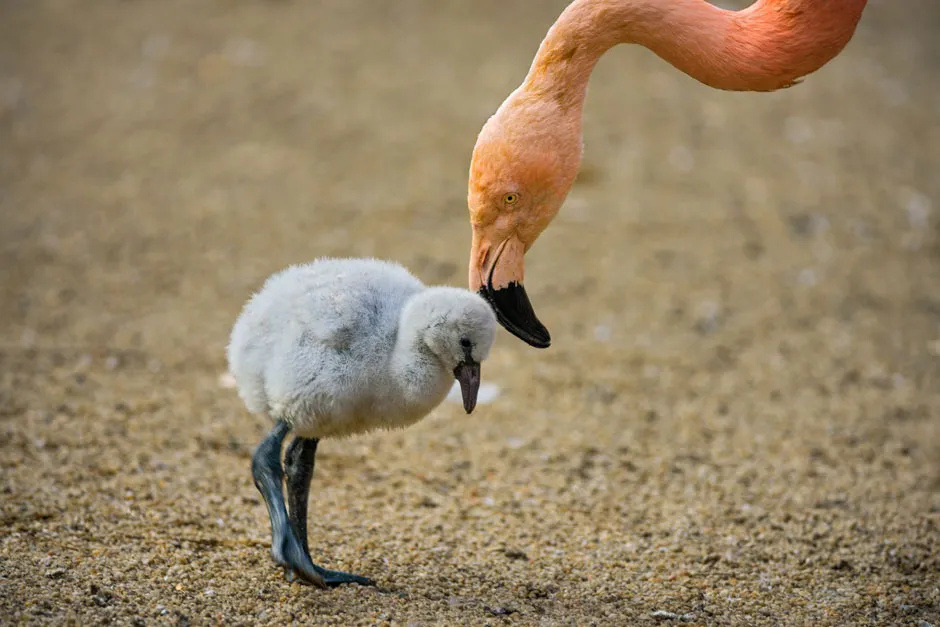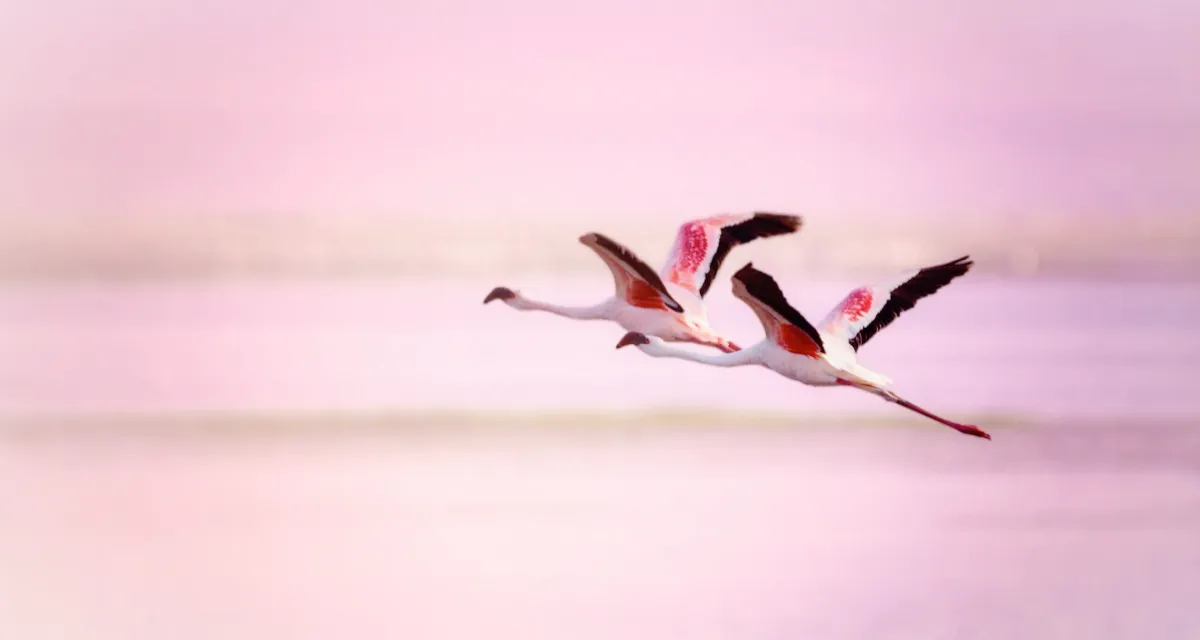Ever wondered why flamingos are pink? We hate to shoot you down so soon, but they’re not really. Well, not at birth, anyway.
Young flamingos flaunt grey/white colour feathers and only develop their pinkish hue after delving into a diet of brine shrimp and blue-green algae – food that would likely kill other animals.
“Flamingos tend to live in inhospitable, relatively remote wetlands – lakes so alkaline in pH it could burn human flesh off the bones. Within this water, however, is an untapped resource of food like crustaceans, cyanobacteria and diatom algae. All of these can be dangerous to many other animals as they contain toxic chemicals called carotenoids,” explains Dr Paul Rose, zoologist at the University of Exeter.
So, how are flamingos able to eat these foods without falling seriously ill? Thanks to their specialised metabolism, the birds are able to process these harmful chemicals in the liver, breaking them down into functional components and pigments.
It’s these pigments that eventually stain a flamingo’s feathers – and that’s not all.
“Their skin, mucous membranes, egg yolks and even fat are stained pink and similar colours like orange,” says Rose.
“It’s also worth noting this only works with pink pigments – you can’t feed a flamingo blue food dye and hope it turns sapphire, for instance!”

Interestingly, while flamingos are pink primarily as a by-product of their diet, their colour takes on a special significance during mating season.
“As a flamingo, the pinker you are, the healthier and better quality you are – it's a direct reflection of how good you are at foraging. And you can use that to attract a mate in a courtship ritual,” says Rose.
Where do flamingos live?
In total, there are six flamingo species: the greater flamingo, Chilean flamingo, Caribbean flamingo, lesser flamingo, Andean flamingo and James’s flamingo.
As its name suggests, the greater flamingo, with a height of 110 to 150cm and a weight of up to 4kg, is the largest of the bunch, and is also the most widespread. They can be found in Africa, southern Europe, the Indian subcontinent and the Middle East.
The Caribbean flamingo, also called the American flamingo, breeds in South America and the Caribbean, although its range can stretch to the southern regions of Florida. It is arguably the pinkest of all the flamingo species.
The Chilean flamingo, Andean flamingo and James’s flamingo all live in South America, with the Chilean flamingo occupying the largest range. These three species can often be found in the same areas, and will even live in flocks together.
The lesser flamingo, with a height of 80 to 90cm and a weight of 1.2-2.7kg, is the smallest of the flamingo species, and lives in sub-Saharan Africa and northwest India.

Can flamingos fly?
Even though they are pretty sizeable birds, flamingos can fly. It takes them a little bit of effort to take off: they’ll usually run for a few steps while flapping their wings to build momentum. They can fly at speeds of 50 to 60km/h (31-37mph). If they need to travel a great distance, they’ll do so at night when it’s cooler and there are fewer predators about. A flock can travel up to 600km (372 miles) in a single night. They can fly at high altitudes of three to four kilometres.
What is a flamingo courtship dance?
Each of the six flamingo species all sport their own courtship dance rituals. But although their routines differ, they all contain the same key moves (none of which, sadly, includes 'the floss').
The tallest members of the flamingo colony (normally the males) will kick off the dance party with some ‘head fragging’ – basically throwing their head from side-to-side – as they stand very tall and rigid. At this signal, other birds of both sexes will join the party.
“Flamingos aren’t like peacocks where the male has to put on a display for the female. Both sexes will join in – it’s all very democratic in this way,” says Rose.
After this head fragging, the routine becomes more intense, the flamingos then throwing in some large wing movements. And if they get particularly excited, they’ll start charging together in the same direction.
It’s not exactly Britain’s Got Talent standard, but this routine has still mesmerised zoologists such as Rose.
“We don’t know the exact mechanism behind male and female choice, but we know that the flamingos will pair off within that group based on who’s the best dancer and who has the greatest colour,” he says.
However, not all flamingos will be involved in this dancing ritual – and many of these birds won’t be pink at all.
“Flamingos – both male and female – can lose their pink pigments outside of breeding season. That’s because the breeding is so intensive and so much of their food is used for their chicks. During this time their white colour basically means ‘Please leave me alone. I'm a little bit exhausted from breeding – I'll join in the dancing later.’”
What are a group of flamingos called?
Funny you should ask: it depends on what they’re doing at the time.
The collective noun for flamingos going about their everyday activities such as feeding, is a 'stand'. However, when in the midst of their courtship dance, a group of flamingos are known, amazingly, as a flamboyance.
About our expert
Dr Paul Roseis a zoologist with a particular interest in behavioural ecology, ornithology and animal welfare. He is also co-chair for the IUCN/SSC Flamingo Specialised Group.
Read more about flamingos:
